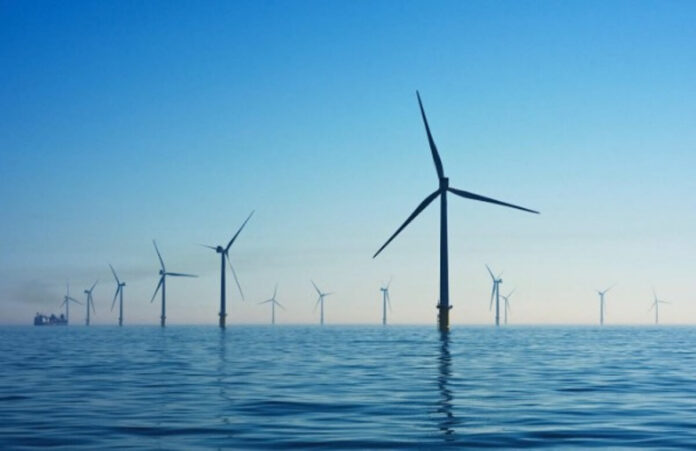As the demand for renewable energy sources grows, so does the importance of ensuring safety in the offshore renewables sector. Proper hazard identification and risk assessment are crucial processes to minimize potential risks and maintain a safe working environment. Hazard identification involves identifying potential hazards that may arise during various operational activities, while risk assessment evaluates the likelihood and potential consequences of those hazards.
In the United Kingdom, offshore renewables have become increasingly relevant due to the country’s commitment to reducing carbon emissions and transitioning towards a greener economy. As such, the need for effective hazard identification and risk assessment practices has become even more critical.
The Importance of Hazard Identification in Offshore Renewables
Effective hazard identification is essential in the offshore renewables sector as it allows for proactive risk mitigation, reducing the potential for harm to personnel, damage to equipment, and environmental impacts. The offshore renewables industry is subject to a range of unique hazards that must be identified and managed through a robust risk assessment process.
Read Also: Choosing the Perfect Mini Tractor: A Practical Guide
Failure to adequately identify hazards in the offshore renewables industry can lead to devastating consequences such as loss of life, environmental damage, and financial losses. Additionally, offshore renewable projects in the UK are subject to stringent regulations that require thorough hazard identification and risk assessment to obtain necessary permits and approvals.
By proactively identifying hazards, companies can effectively manage risks and ensure the safety of their personnel and equipment.
The Importance of Hazard Identification in Offshore Renewables
The offshore renewables industry presents a range of unique hazards that must be identified and managed effectively to maintain safety and mitigate risks. These hazards include:
- High winds and waves
- Equipment failure
- Subsea obstructions
- Confined spaces
- Chemical and biological hazards
Identifying these hazards allows companies to evaluate the risks associated with these activities and develop strategies to mitigate them. Effective hazard identification forms the foundation of a robust risk management strategy, allowing companies to prevent accidents and minimize damage in the event of an incident.
A failure to identify hazards can result in serious consequences, including loss of life, environmental damage and financial loss.
Key Steps in Hazard Identification
The hazard identification process involves a series of key steps that must be undertaken to ensure all hazards are identified and evaluated appropriately. These steps include:
- Identifying all activities associated with the project
- Identifying and assessing all possible hazards
- Evaluating the frequency and severity of each hazard
- Developing strategies to mitigate each identified hazard
To effectively identify hazards, companies must engage subject matter experts and stakeholders, including offshore tag suppliers, to ensure that all hazards are identified and evaluated. Utilizing specialized tags and equipment provided by offshore tag suppliers can enhance the effectiveness of hazard identification and management strategies.
Effective hazard identification requires a thorough and systematic approach, including the involvement of experts and stakeholders, to ensure all hazards are identified and evaluated.
Key Steps in Hazard Identification
The hazard identification process involves the systematic identification of potential hazards and their associated risks. This process is essential for ensuring safety in the offshore renewables industry. Here are the key steps involved in the hazard identification process:
- Identify the scope of the assessment: This involves defining the boundaries of the assessment and identifying the specific aspects of the offshore renewables operation to be assessed.
- Identify the hazards: This involves identifying potential hazards associated with the defined scope. These hazards can be identified through various methods such as brainstorming, checklists and hazard analysis.
- Assess the risks: This involves evaluating the potential consequences and likelihood of the identified hazards. The risk assessment process helps to prioritize hazards based on the level of risk they pose.
- Implement risk control measures: This involves identifying and implementing risk control measures to mitigate the identified hazards. The control measures can include engineering controls, administrative controls and personal protective equipment.
- Review and update: Regular review and updating of the hazard identification process is essential to ensure that new risks are identified and managed effectively.
The process of hazard identification requires the involvement of experts and stakeholders to ensure a comprehensive assessment of potential hazards and risks. It is important to note that the hazard identification process is an ongoing process that should be reviewed and updated regularly to ensure continued effectiveness.
Conducting Risk Assessment in Offshore Renewables
Assessing risks is a critical part of ensuring safety in the offshore renewables sector. Risk assessment involves identifying potential hazards and evaluating their likelihood and impact, allowing for proactive mitigation measures to be put in place.
The objective of risk assessment is to improve safety, reduce the likelihood of incidents, and minimize the consequences of any incidents that do occur. In the offshore renewables industry, risks can arise from equipment failure, adverse weather conditions, and other factors specific to offshore operations.
The risk assessment process typically involves the following steps:
- Identification of hazards
- Evaluation of the likelihood and consequences of hazards
- Identification of risk mitigation measures
- Implementation of risk mitigation measures
- Monitoring and review of risk management measures
There are several methodologies and tools commonly used for risk assessment in the offshore renewables industry. HAZID (Hazard Identification) involves identifying potential hazards and their causes. HAZOP (Hazard and Operability Study) is used to identify and mitigate hazards in the design and operation of offshore facilities. FMEA (Failure Mode and Effects Analysis) is used to identify and evaluate potential failures in equipment and systems.
It’s important to note that risk assessment is an ongoing process, and assessments should be regularly reviewed and updated as conditions change. New technologies, changes in regulations, and other factors can impact the safety and risk profile of offshore renewable operations, requiring updates and revisions to existing risk assessments.
Tools and Techniques for Risk Assessment
Several tools and techniques are commonly used for risk assessment in the offshore renewables sector, each with their own benefits and limitations. These methodologies aid in identifying and evaluating potential risks, and help to inform proactive risk mitigation strategies.
HAZID (Hazard Identification)
HAZID is a structured and systematic process that identifies potential hazards and their associated consequences. It is commonly used in the early stages of a project to identify hazards and assess the risks associated with the design and construction of facilities. HAZID involves a multidisciplinary team of experts who review various project documents, including drawings, specifications and procedures, to identify potential hazards. The team then assesses the identified risks and develops mitigation strategies to control those risks.
HAZOP (Hazard and Operability Study)
HAZOP is a comprehensive method that assesses hazards and identifies potential operability problems in process systems. HAZOP studies are typically carried out in the early design phase of a process system to identify deviations from design intent, including the causes and consequences of these deviations. The results of a HAZOP study help to evaluate the safety of the process system, to identify potential loss scenarios, and to develop appropriate risk control measures.
FMEA (Failure Mode and Effects Analysis)
FMEA is a systematic approach that identifies the ways in which a system or process might fail, by analysing all potential failure modes and their associated effects. FMEA is used to identify potential faults or errors in a process, and to evaluate the severity of their impact. This method is commonly used to evaluate the design of complex systems or processes, and is especially useful for identifying potential hazards associated with equipment failure.
Overall, the use of these methodologies, along with other tools and techniques, can help ensure that operators in the offshore renewables sector are well-equipped to identify and evaluate potential hazards, and to develop effective risk mitigation strategies.
Importance of Regular Review and Updates in Hazard Identification and Risk Assessment
Regular review and updates of hazard identification and risk assessment processes are crucial in the offshore renewables sector. This is because the nature of hazards and risks in this industry is constantly changing, and as new technologies and regulations emerge, existing assessments may be rendered obsolete.
The dynamic nature of offshore renewables means that regular review and updates are necessary to ensure that all possible hazards and risks are identified and managed appropriately. Ongoing evaluation ensures that any changes to the operating environment or equipment are taken into account and that any new hazards are identified and assessed promptly.
Offshore Tag Suppliers and their Role in Hazard Identification and Risk Assessment
Offshore tag suppliers play a critical role in enhancing hazard identification and risk assessment practices in the offshore renewables sector. These suppliers provide specialized equipment and tags that aid in identifying and managing hazards, which is essential for promoting safety and minimizing risks.
One of the key benefits of using offshore tag suppliers is their ability to provide customized tags that are specifically designed for the unique hazards and risks associated with offshore renewables. For example, suppliers may provide tags that are resistant to harsh weather conditions, corrosion, and other environmental factors that are commonly encountered in offshore operations.
Offshore tag suppliers may also provide specialized equipment, such as radio-frequency identification (RFID) tags, which are used to track equipment and assets on offshore platforms. By using RFID tags, operators can quickly locate and identify equipment, which is essential in emergency situations or when conducting routine maintenance.
Moreover, offshore tag suppliers may offer training and support to operators and maintenance personnel to ensure that they are properly using and maintaining the tags and equipment. This helps to ensure that the hazard identification and risk assessment processes are effective and up-to-date.
Overall, offshore tag suppliers are an essential component of hazard identification and risk assessment in offshore renewables. Their specialized equipment and expertise help to enhance safety, minimize risks, and ensure compliance with regulations. Operators and project managers should prioritize the use of offshore tag suppliers to optimize their hazard identification and risk assessment processes.
Conclusion
In conclusion, hazard identification and risk assessment are critical components of ensuring safety in the offshore renewables sector. Their importance cannot be overstated, as failure to properly identify and assess hazards can result in severe consequences for individuals, companies, and the environment. By identifying potential hazards and conducting risk assessments, offshore renewables companies can take proactive steps to mitigate risks and ensure the safety of all involved.
Regular review and updates of hazard identification and risk assessment processes are also crucial, given the dynamic nature of hazards and risks in this industry. Changes in technology or regulations may require updates to existing assessments, emphasizing the need for ongoing evaluation and continuous improvement.










